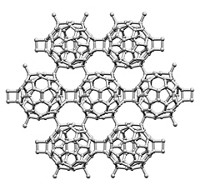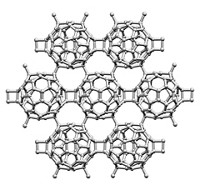Advertisement
Grab your lab coat. Let's get started
Welcome!
Welcome!
Create an account below to get 6 C&EN articles per month, receive newsletters and more - all free.
It seems this is your first time logging in online. Please enter the following information to continue.
As an ACS member you automatically get access to this site. All we need is few more details to create your reading experience.
Not you? Sign in with a different account.
Not you? Sign in with a different account.
ERROR 1
ERROR 1
ERROR 2
ERROR 2
ERROR 2
ERROR 2
ERROR 2
Password and Confirm password must match.
If you have an ACS member number, please enter it here so we can link this account to your membership. (optional)
ERROR 2
ACS values your privacy. By submitting your information, you are gaining access to C&EN and subscribing to our weekly newsletter. We use the information you provide to make your reading experience better, and we will never sell your data to third party members.
Materials
Nanotube Electronics Flex With Self-Styled Wrappers
Nanomaterials: Single-walled carbon nanotubes help create self-wrapping sensors and transistors
by Matt Davenport
June 15, 2015
| A version of this story appeared in
Volume 93, Issue 24
Carbon nanotubes are now helping researchers bend flexible electronics to their whims. Engineers led by Zhenan Bao of Stanford University have combined nanotube films with shape-memory polymers to create self-wrapping three-dimensional devices, such as sensors and transistors (Adv. Sci. 2015, DOI: 10.1002/advs.201500103). The team constructed its devices on flexible bilayers of polyimide and shape-memory polystyrene, which bend into predetermined shapes upon heating. By building multiple miniature metallic heating circuits onto polymer bilayers, the team can controllably wrap their devices around objects with diameters as small as 750 µm. To add further functionality to this flexibility, the researchers have turned to thin films of semiconducting single-walled nanotubes. These nanotube films, which are deposited from solution, maintain their electronic properties as they bend and stretch with the polymers, allowing the team to wrap up previously planar nanotube devices, including hydrogen gas sensors and transistor circuits. Although nanotubes are a robust material choice for these devices, the researchers say the self-wrapping substrates could also support other flexible electronics, such as nanostructured metal or silicon.





Join the conversation
Contact the reporter
Submit a Letter to the Editor for publication
Engage with us on Twitter